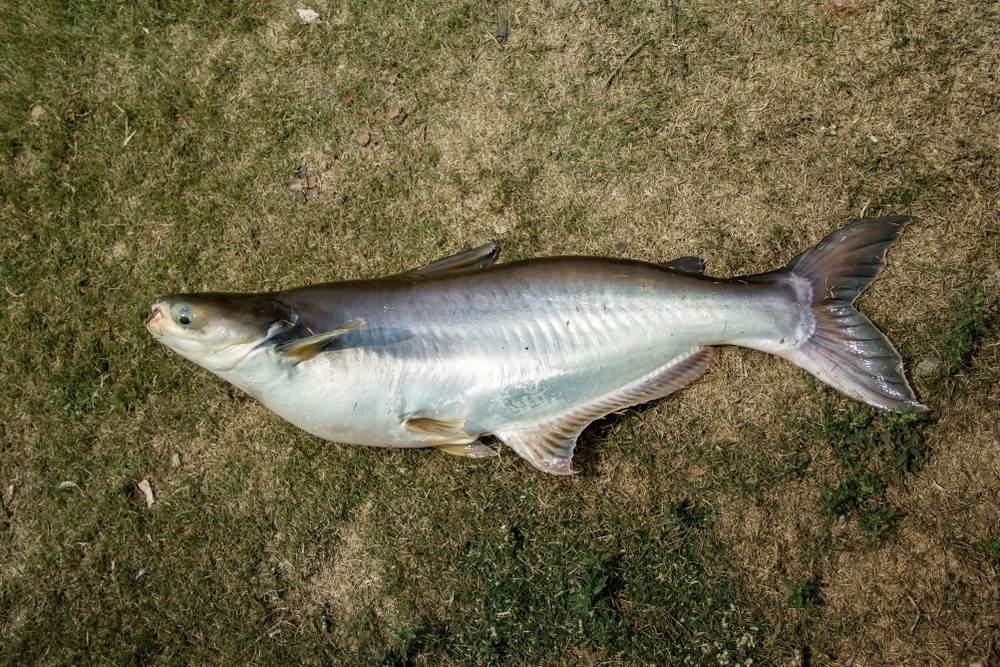
Due to many similarities between different types of fish, it is common to see people confused about the differences. There are many fish that resemble each other in size, shape, and color. So, you will notice people argue about the classification of these fish on the online fishing forums.
With that said, it can be pretty helpful to know about the many aspects of these fish while you’re on a trip. So, here will be going over some aspects of Swai vs Basa. If you’re unaware of these fish and want to learn more, follow through with this information.
Swai vs Basa Comparison
Swai
Both Swai and Basa are categorized as two different types of catfish that bring an exquisite yet mild taste to the table. However, when you go into the specifics, people mention that Swai has a bit milder flavor compared to Basa. So, if your dish is looking for a more flavorful fish, then Swai might not be the right pick for you. Instead, try going for a Basa fillet, and it will add more richness of taste to your recipe. With that said, you can’t always look towards flavor while choosing your fish.
As far as the shape and size are concerned, both fish are pretty similar with minimal color variations. It can be somewhat challenging for even an expert to determine the type of fish at first glance accurately. You will often notice a greyish green shade on Basa, while Swai brings a pinkish color to the table. Aside from this color difference, the structure of the Swai fish is pointier as it maintains a cylindrical shape. On the other hand, Basa has more bulk to it and covers a rounder region.
However, when you’re buying fillets in the market, it can be impossible to set one meat apart from the other. So, you need to rely on the labeling and expert opinion to accurately find which fillet is Swai and which fillet is Basa. Aside from this, the only reason why Swai is preferred over Basa is that it is safer to eat when compared to Basa.
Many experts have pointed out Basa surviving in contaminated situations. So, even if a Basa is wild-caught, that doesn’t imply it is safe to eat. Always use a trusted supplier and store to purchase your Basa if you want to avoid health issues.
Basa
Basa is a type of catfish known for its exquisite flavor. Many cooks have pointed out more richness and depth to the Basa when compared with Swai. Sadly, this richness in flavor does not come free of risk. Many reports have shown that the survival abilities of this fish allow it to survive in contaminated water. In these situations, it absorbs all the toxins and chemical waste. Once this fish is caught and cooked, these toxins affect the infected Basa people in their recipes. This is the reason why you will notice many people avoid Basa.
However, if you’ve caught the Basa yourself and you’re sure this fish has not been in contaminated water, then, by all means, use this fish in your recipes. It will give you a more flavorful recipe while providing the same texture as the Swai. But if you’re not especially worrying about the deep flavor and want a safer alternative, then Swai will be perfect for you. Even though it doesn’t offer the same exquisite taste, the mildness can take the flavor of any recipe you’re trying.
So, if you’re an experienced cook, a Swai fish will serve you just as well as a Basa. As far as nutrition is concerned, Basa offers more benefits. However, with the dangerous aspect of this fish, it is a gamble to add Basa into your weekly diet. So, if you’re looking for a perfect substitute for Basa, Swai is the fish for you. Ideally, it should fit your weekly diet perfectly as long as your consumption is in moderation.
To be extra careful, you should refer to your doctor and get his opinion on whether or not you should add Swai to your diet. That way, he will provide you with a definite answer on whether or not Basa is the fish for you. Hopefully, this will help you make a better decision about which fish will better suit your needs
